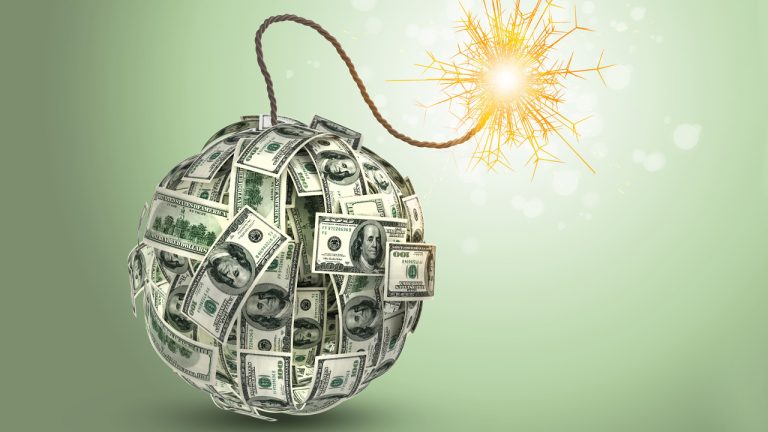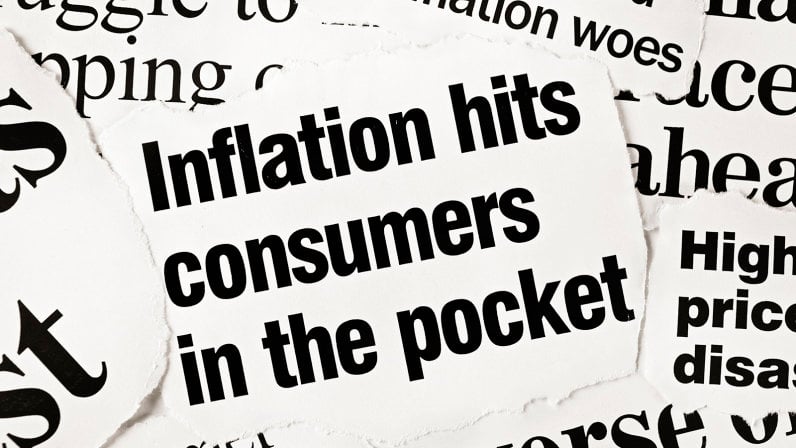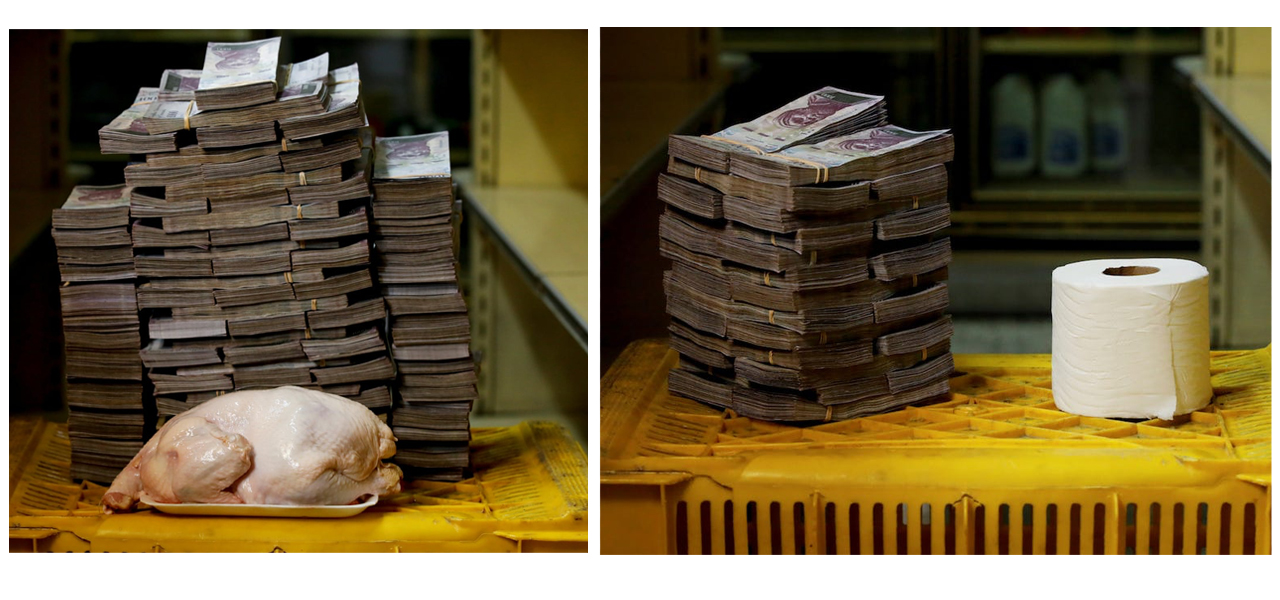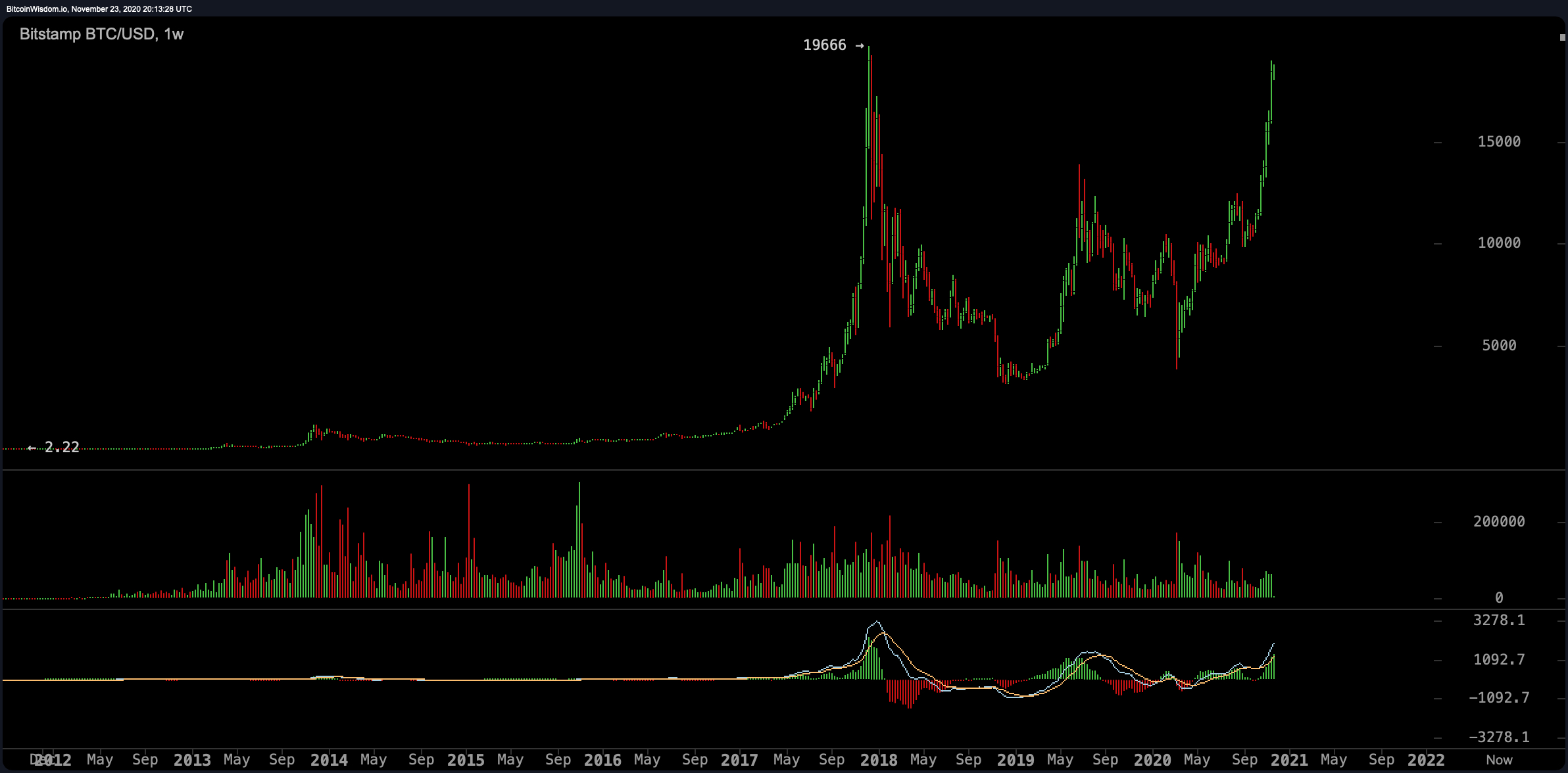Hyperinflation and Rent Controls – 2020’s Telltale Signs of Economic Distress Haunts Many Nations
Publikováno: 24.11.2020
 If history serves us well, 2020 is likely a precursor to a long and dreadful economic depression throughout a myriad of countries worldwide. During the last year, economists and analysts have been discussing how specifically the United States economy and the U.S. dollar are losing global dominance quite rapidly. While a few analysts believe the […]
If history serves us well, 2020 is likely a precursor to a long and dreadful economic depression throughout a myriad of countries worldwide. During the last year, economists and analysts have been discussing how specifically the United States economy and the U.S. dollar are losing global dominance quite rapidly. While a few analysts believe the […]
The post Hyperinflation and Rent Controls – 2020’s Telltale Signs of Economic Distress Haunts Many Nations appeared first on Bitcoin News.

If history serves us well, 2020 is likely a precursor to a long and dreadful economic depression throughout a myriad of countries worldwide. During the last year, economists and analysts have been discussing how specifically the United States economy and the U.S. dollar are losing global dominance quite rapidly. While a few analysts believe the old adage “it could never happen here,” many economists expect the increase of rent controls and hyperinflation to ravage the U.S. and many other powerful countries.
Countries That Allow Massive Stimulus Injections Will Face Serious Economic Implications
The coronavirus outbreak was a great excuse for the world’s banking cartel to mint more promissory notes than any other time in history. In the U.S., Americans have seen $9 trillion in stimulus injections, but the Federal Reserve’s 2020 pump has barely stirred the masses. Estimates say, in 2020 alone, the U.S. has created 22% of all the USD issued since the birth of the nation.
Moreover, the U.S. is not the only country seeing massive amounts of Covid-19-related stimulus packages, as countries like Japan, China, and the European Union have injected trillions into the hands of the private sector as well. This massive amount of money creation has led economists to believe that a combined effort of rent controls and unruly hyperinflation will cause countries like the U.S. significant stress, as well as possibly fueling a fiat collapse.

Recently an analyst from seekingalpha.com said he wholeheartedly believes the U.S. is heading toward hyperinflation. “Deficit to outlay ratio tops 60%, above the hyperinflationary threshold of 40%,” the analyst wrote three weeks ago. “Q2 2020 GDP shrank 31.7%, but will improve in Q3 2020. Delinquencies are on the rise on record-high corporate debt. [And] the U.S. dollar will lose value due to ultra-low interest rates and QE,” he added. The author also deems the precious metal gold as “the only safe haven.”
The Balance contributor, Kimberly Amadeo, has published an editorial about a possible dollar collapse and “what to do if that did occur.” Amadeo insists that if the dollar plummeted significantly in value, “anyone who holds dollar-denominated assets will sell them at any cost.”
“That includes foreign governments that own U.S. Treasuries. It also affects foreign exchange futures traders. Last but not least, it will hit individual investors,” Amadeo further stressed. The Balance writer continued:
Two conditions must be in place before the dollar could collapse. There must be an underlying weakness in the value of the U.S. dollar, and there must be a viable alternative. In other words, there must be a reason people are fleeing the dollar and there must be somewhere for them to go. Otherwise, the dollar will remain the world’s global currency. The majority of international contracts demand a dollar payment, so that also adds to its stability.
History Repeats for Those Who Don’t Learn from Mistakes
A number of people believe the U.S. specifically is following a similar path as the Roman Empire did centuries ago. During the third century BC, well into Imperial times, Roman officials figured out how to decrease the purity of coinage minted. By making coins worth far less in value, the Roman government was allowed to spend more. Modern central banks and the U.S. Federal Reserve has created a process that makes the devaluation of purity less obvious to the common citizen. However, many other countries during the course of history show the scheme will not last forever and eventually, the fiat shell game will end badly.

There are already many modern examples of inflation crushing a country’s legal tender to the point of being nearly worthless. Steve Hanke, professor of applied economics at Johns Hopkins University noted that the definition of hyperinflation is essentially an inflation rate of above 50% for a period of a month-long or more. Additionally, thanks to the Covid-19 outbreak, politicians in various countries have issued rent and eviction controls. This means if you live in a region with rent controls, landlords cannot raise the rent on tenants, and in some cases this year, governments like the U.S. have enforced rental eviction bans.
Early examples in history show that a combination of rent controls and hyperinflation has been disastrous to many economies worldwide. For instance back in the early twenties in Weimar Germany, rent controls and hyperinflation wreaked havoc on the German papiermark, the currency of the Weimar Republic. The crisis in Weimar caused significant civil and political instability in the country. From August 1945 to July 1946, Hungary suffered from hyperinflation as well, as the pengő inflation rate jumped to 207%. During the month of August 1946, Hungary’s new currency, the forint kept the monetary infrastructure stable.

During 1992 and all the way until 1994, Yugoslavia saw inflation levels ramp up and destroy purchasing power. The country saw the highest inflation rate ever, as it climbed to 313,000,000% during a 30 day period. Fast forward to the spring months of 2007 in Zimbabwe all the way until November 2008, as the Zimbabwean dollar experienced hyperinflation. The country hasn’t been the same since, as the Zimbabwean dollar was abandoned in April 2009 and demonetized in 2015. Presently, hyperinflation is also wreaking havoc in Venezuela, as the monetary devaluation to the sovereign bolivar has ruined the currency.

Hyperinflation started in Venezuela back in 2016 and exceeded to jump over 1,000,000% by 2018. The very next year, the bolivar was being weighed on scales rather than counted and inflation reached 10 million percent. Data from the Central Bank of Venezuela (BCV) notes that between 2016 and 2019, the bolivars inflation rate was a whopping 53,798,500%. Of course, a number of other South American countries are also feeling the pain from a 2020 economic downturn. Alongside Venezuela, countries like Brazil, Nicaragua, Peru, Argentina, and Bolivia face horrible economic consequences this year as well.
In addition to gold, many people think that digital currencies like bitcoin (BTC) will prosper during the possible economic fallout. This week, the crypto asset’s market valuation surpassed the market capitalization of the world’s biggest banking giants. Worldwide, bitcoin’s (BTC) market capitalization jumped over the $350 billion range making it larger than banks like JPMorgan Chase USA, ICBC China, BAC USA, and CCB China.
Hyperbitcoinization
While the Balance author Kimberly Amadeo said there must be a viable alternative, cryptocurrency advocates think the alternative might be bitcoin. In fact, while dominant currencies like the USD and others suffer from rampant inflation, crypto proponents believe the world may experience hyperbitcoinization.
“Hyperbitcoinization is a voluntary transition from an inferior currency to a superior one, and its adoption is a series of individual acts of entrepreneurship rather than a single monopolist that games the system,” explained the creator of the ‘hyperbitcoinization’ term Daniel Krawisz in March 2014.

No one can be certain an event like hyperbitcoinization will happen, but bitcoin (BTC) has been the best performing asset in the last decade outpacing every stock, equity, and commodity under the sun. Even in 2020, while the global economy has shuddered, BTC and numerous alternative crypto assets have again performed better than anything the world has to offer in terms of investment performance.
BTC has gained 154% against the USD during the last 12 months and ethereum (ETH) has gained 356% in that time period. During the last 30 days alone, BTC jumped over 40% while ETH is up 44%. With well over 7,000 crypto-assets in existence and a value of over $536 billion today it’s quite noticeable that in comparison to fiat currencies, cryptocurrencies have been a viable alternative.
Despite these facts, editors at the Balance and Kimberly Amadeo warn that it is “unlikely bitcoin could replace the dollar as the new world currency.” Amadeo’s editorial discusses notions like investing in foreign mutual stocks and bonds, having liquid assets on hand, and buying gold and precious metals if the U.S. dollar was showing signs of collapse.
What do you think about the possibility of countries like the U.S. suffering from hyperinflation in the future? Do you think cryptocurrencies are superior in a world of collapsing fiat currencies? Let us know what you think in the comments section below.
The post Hyperinflation and Rent Controls – 2020’s Telltale Signs of Economic Distress Haunts Many Nations appeared first on Bitcoin News.